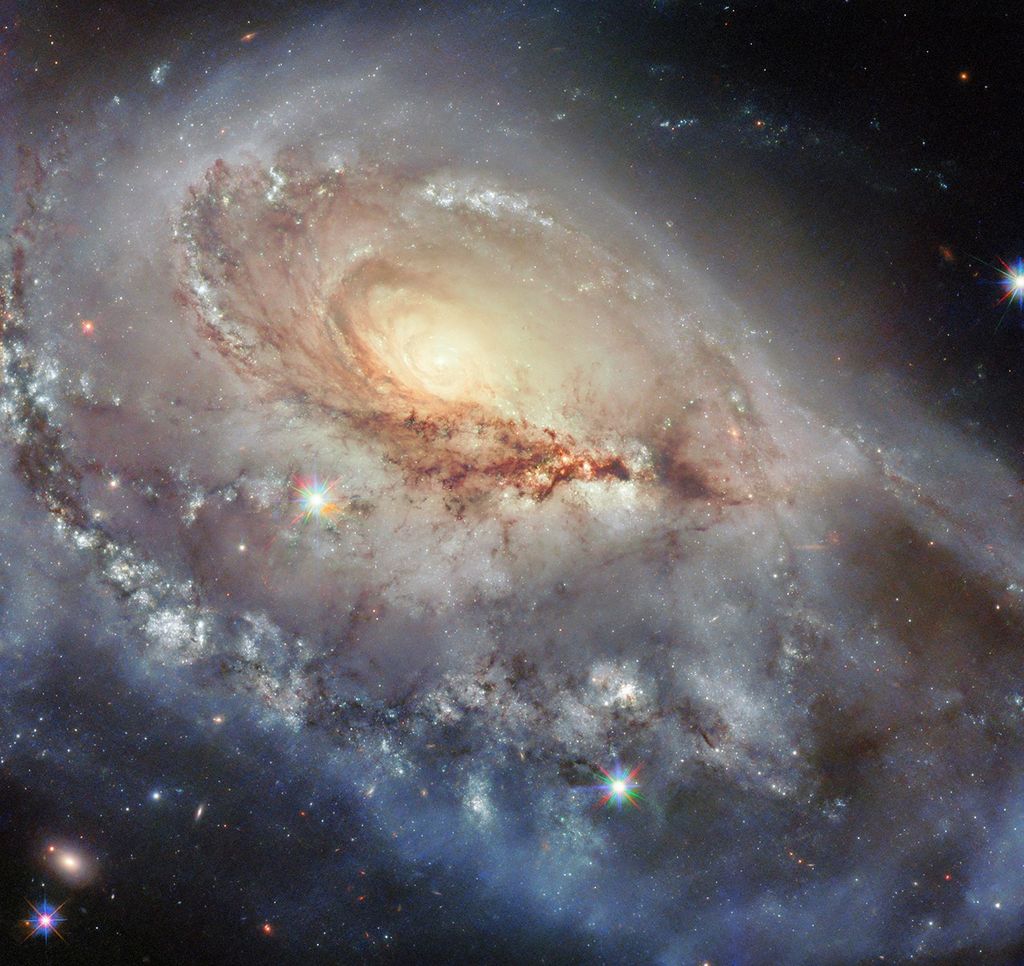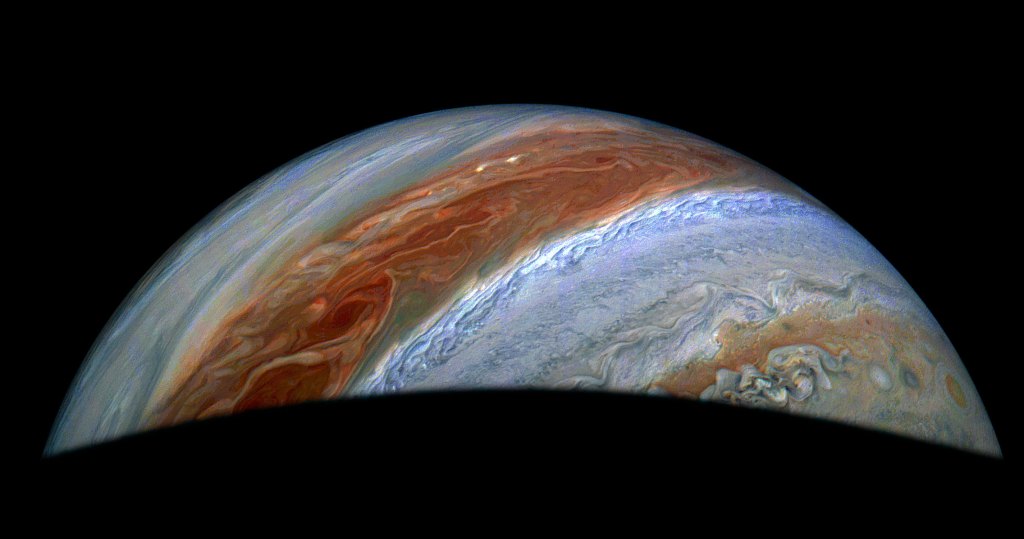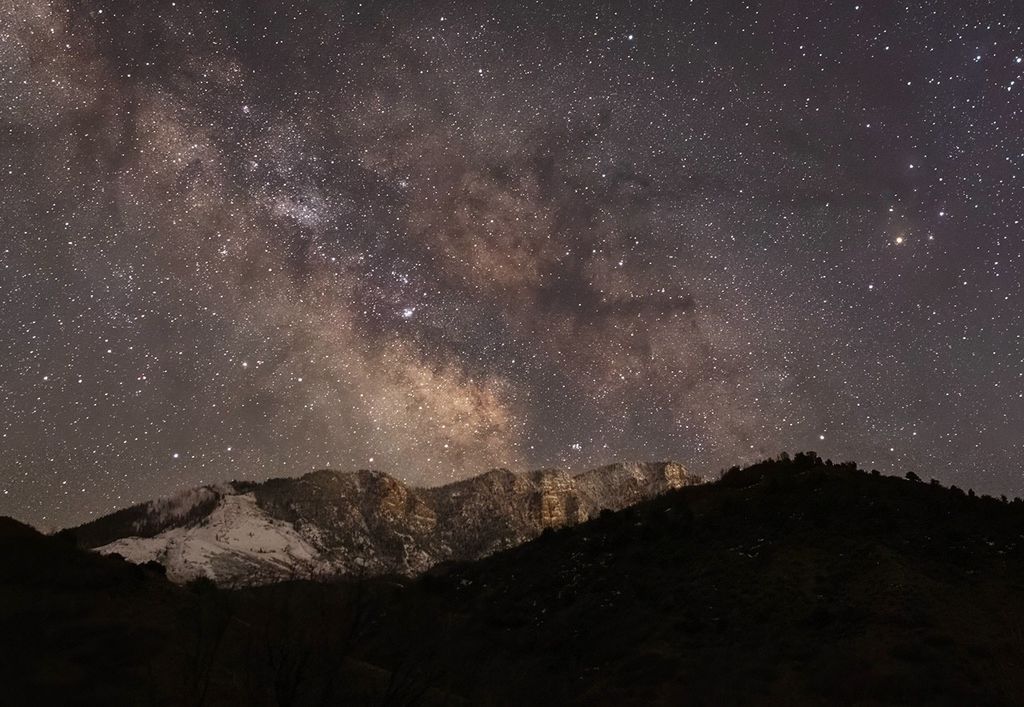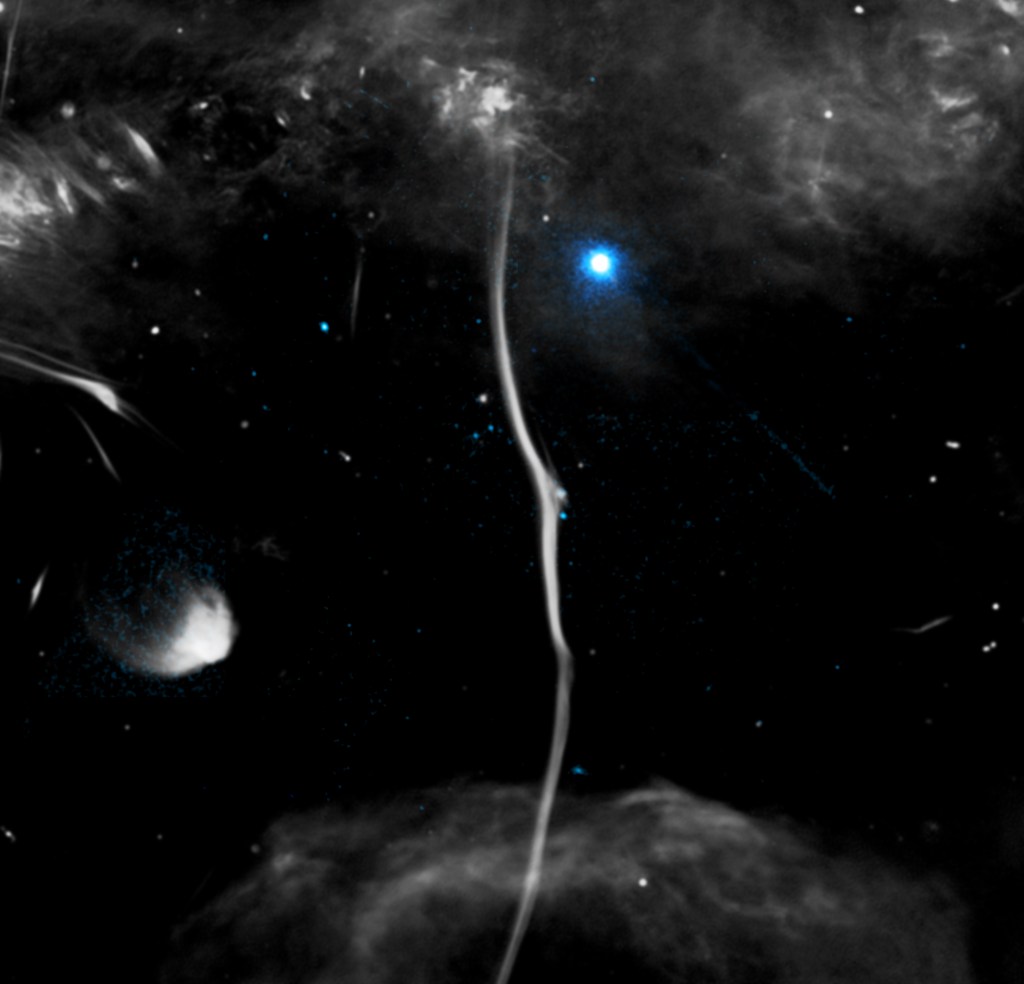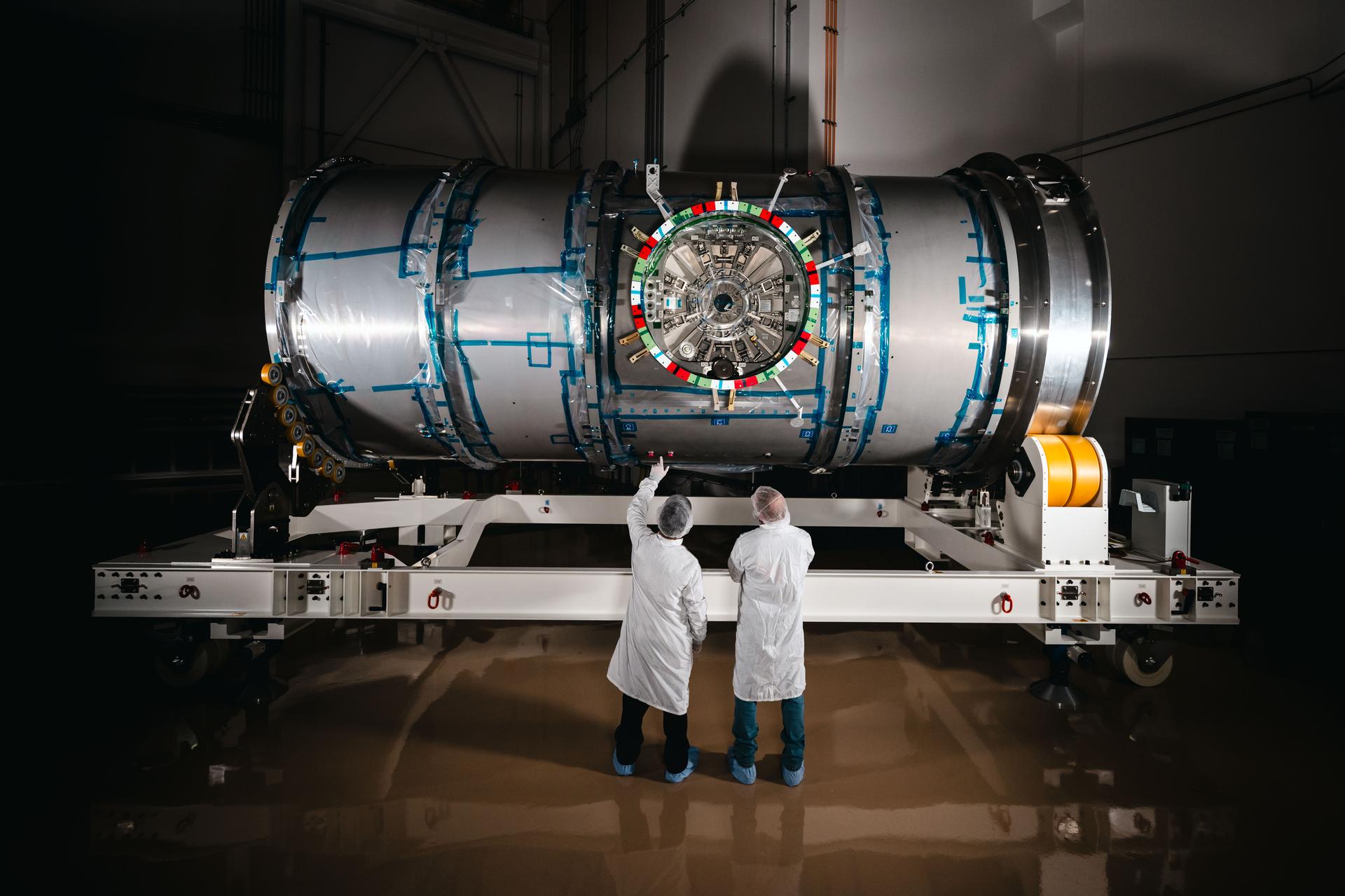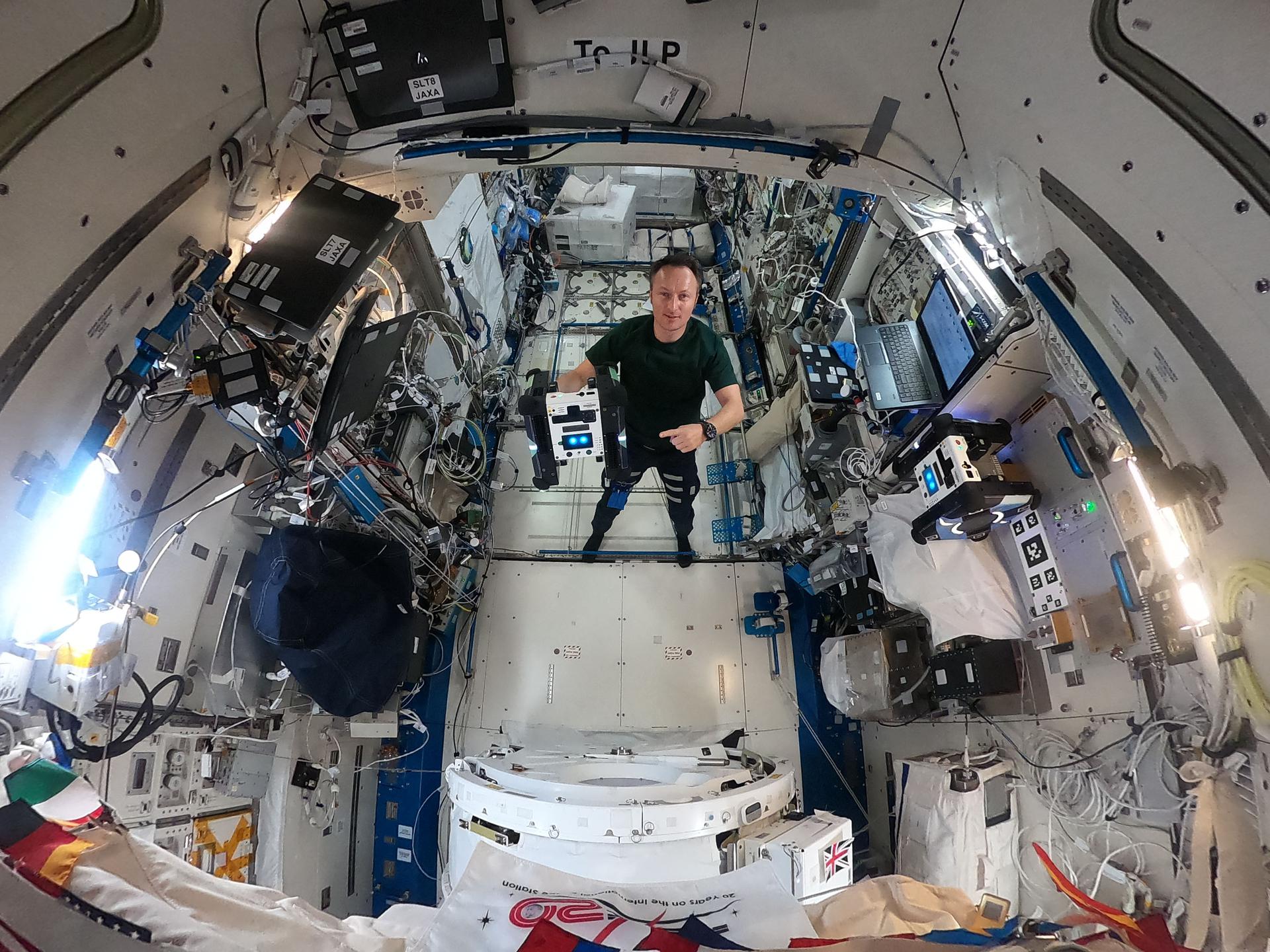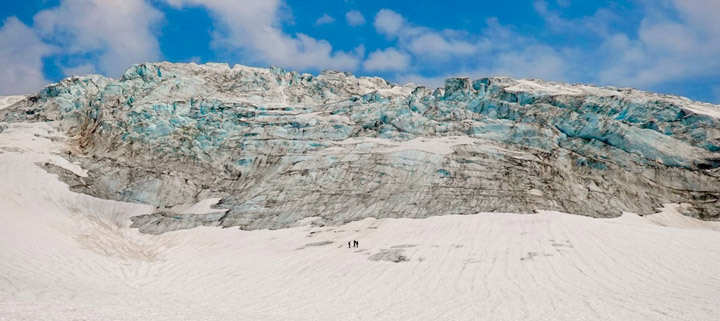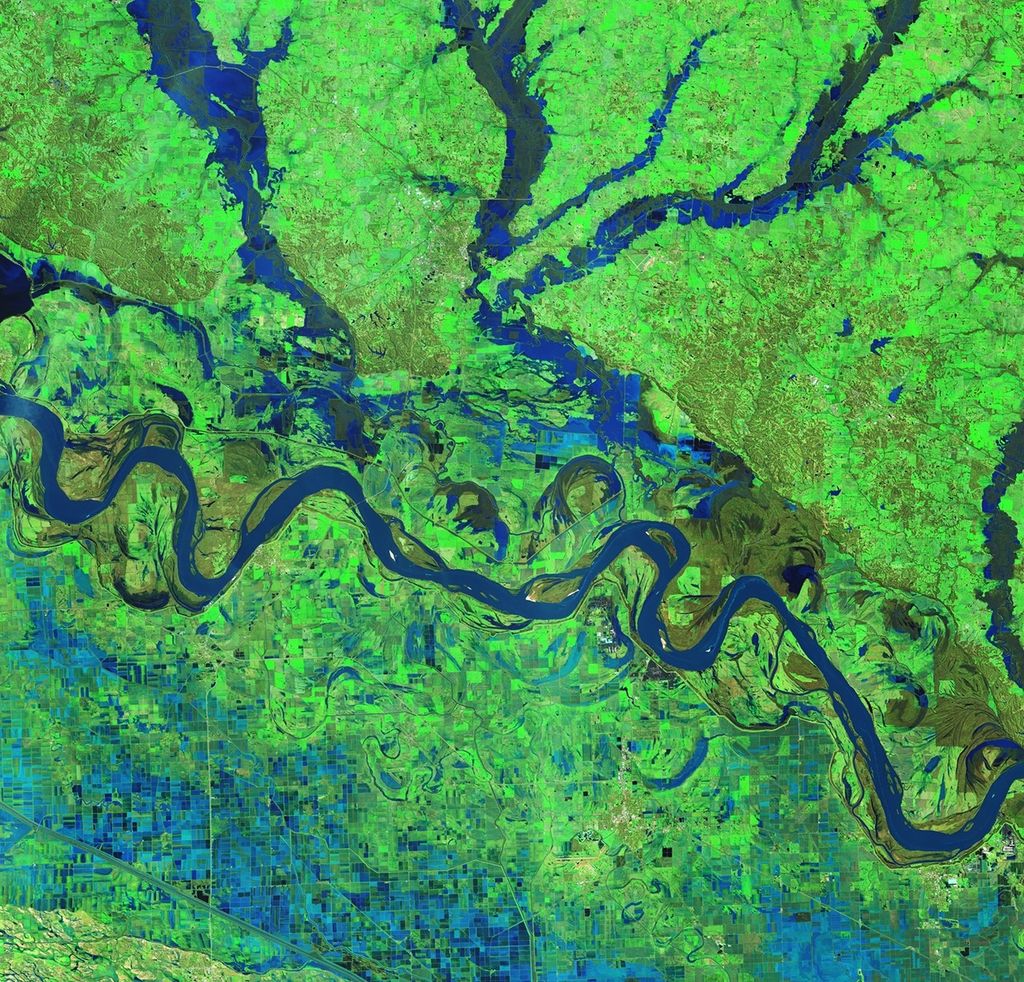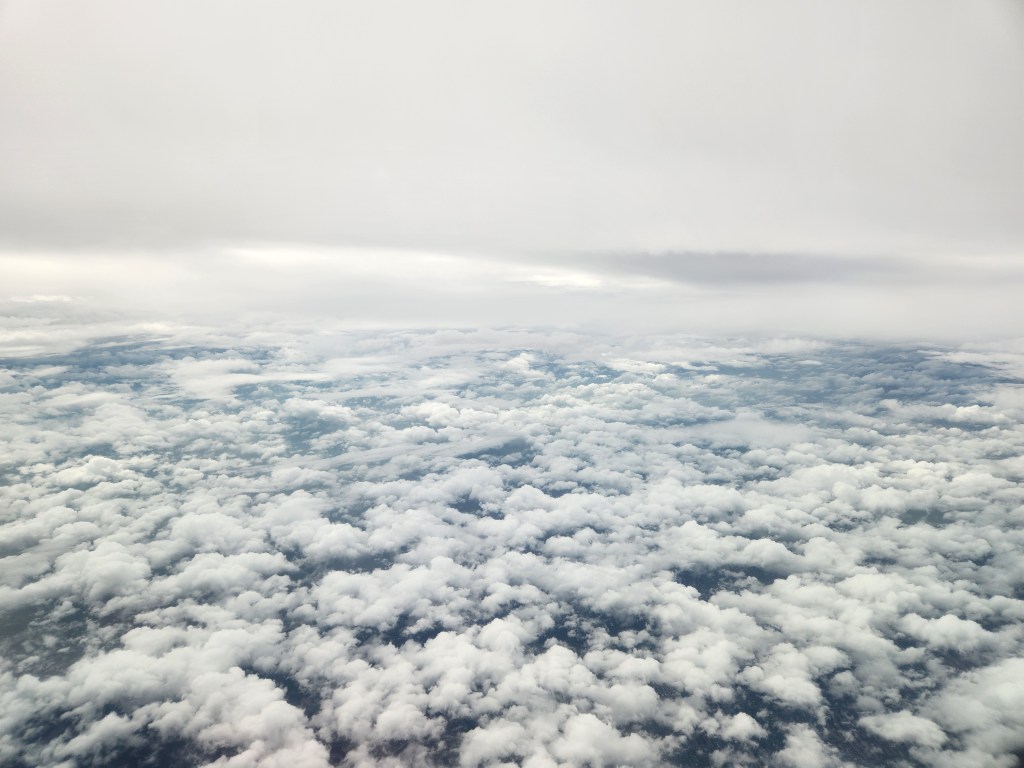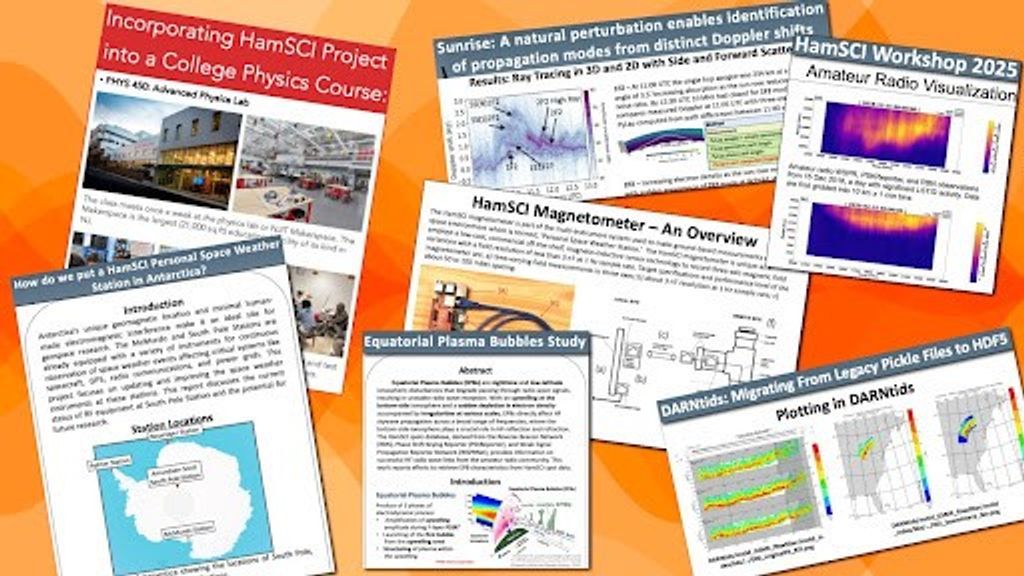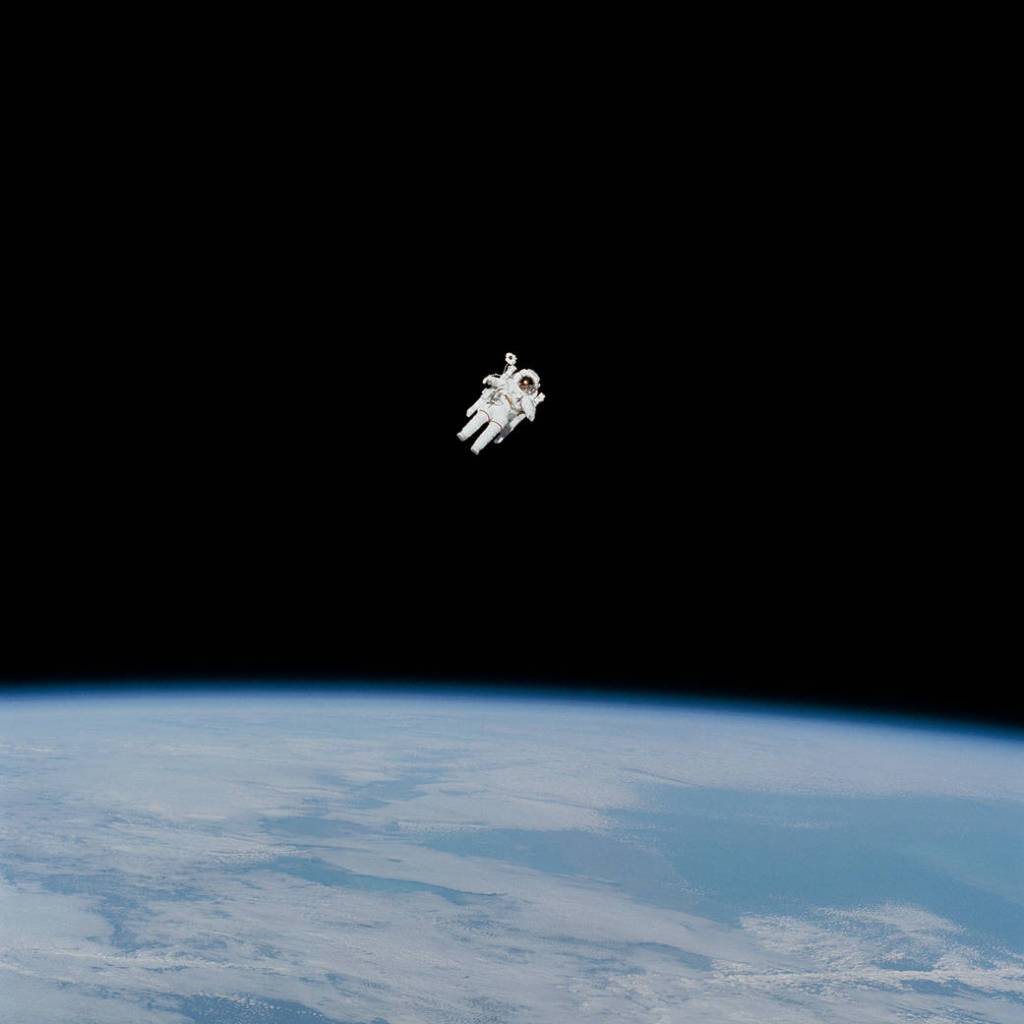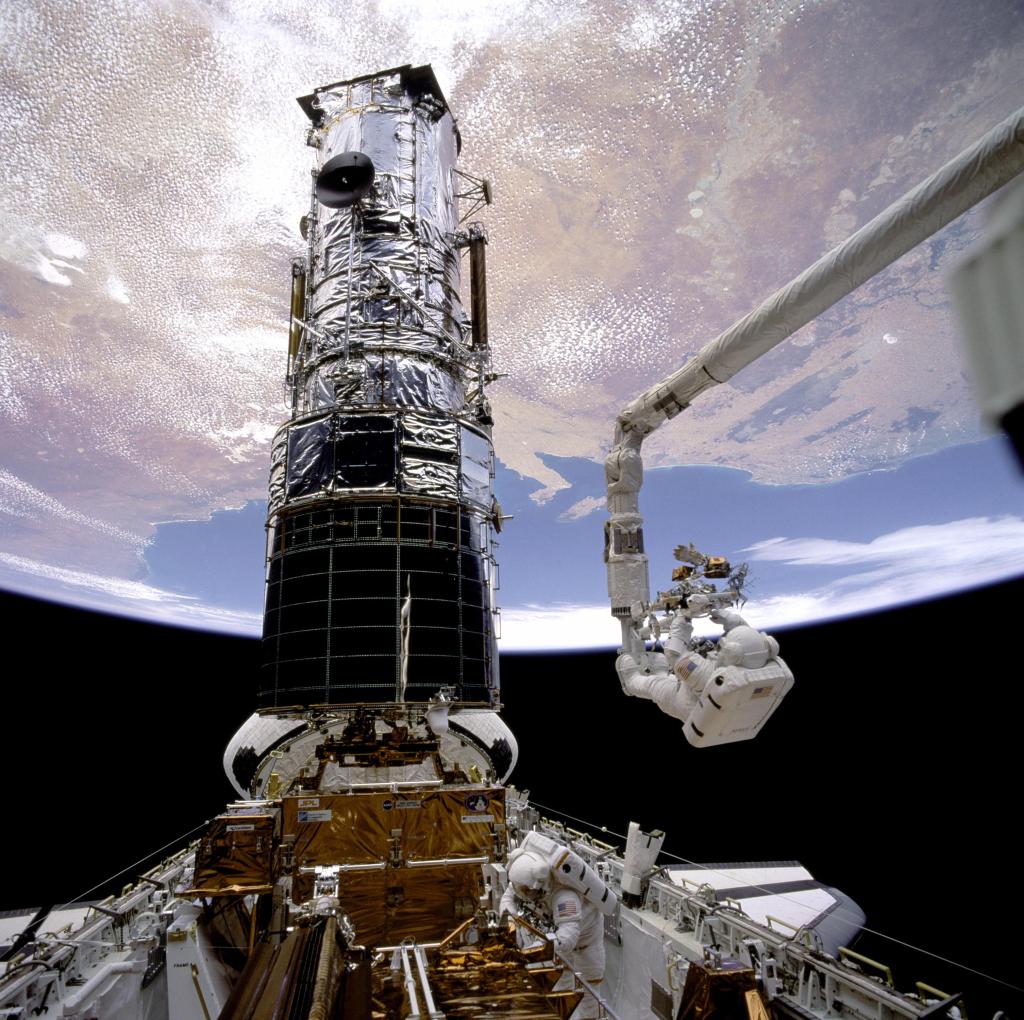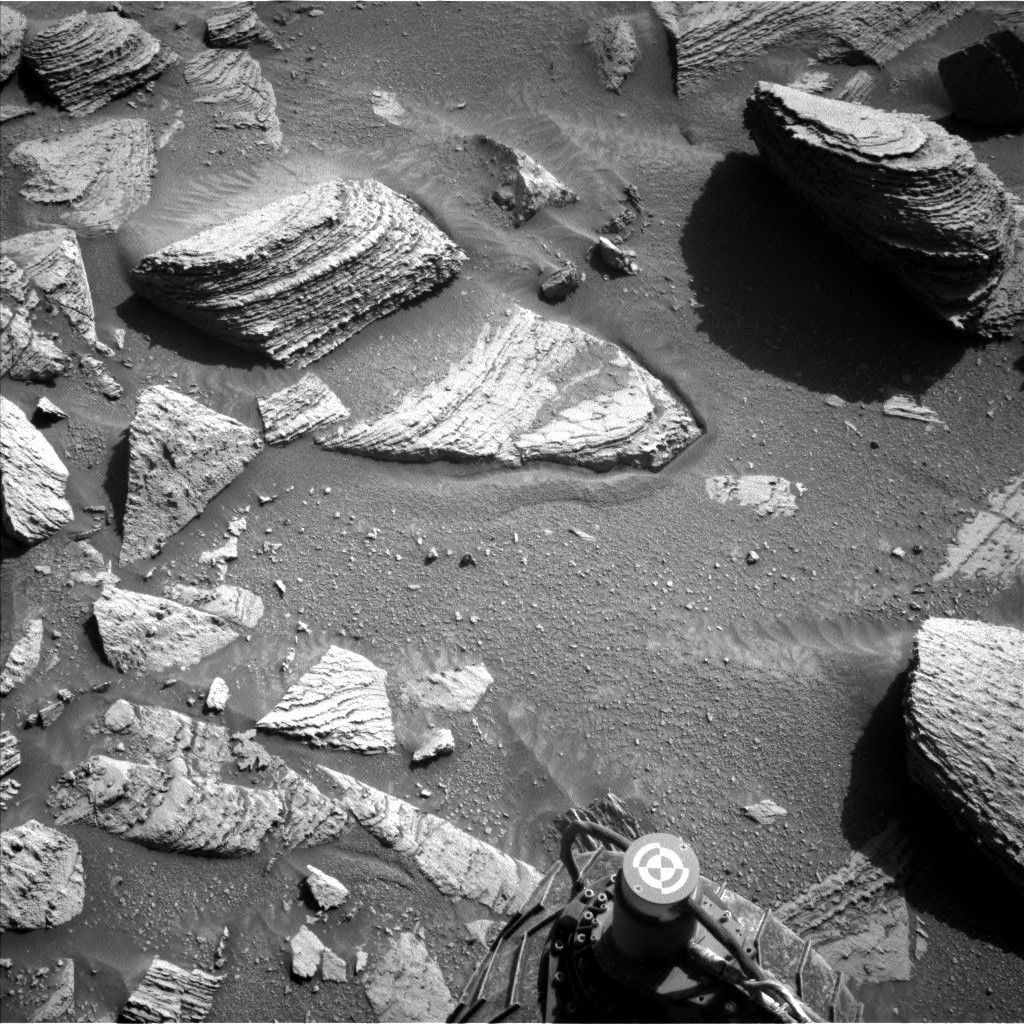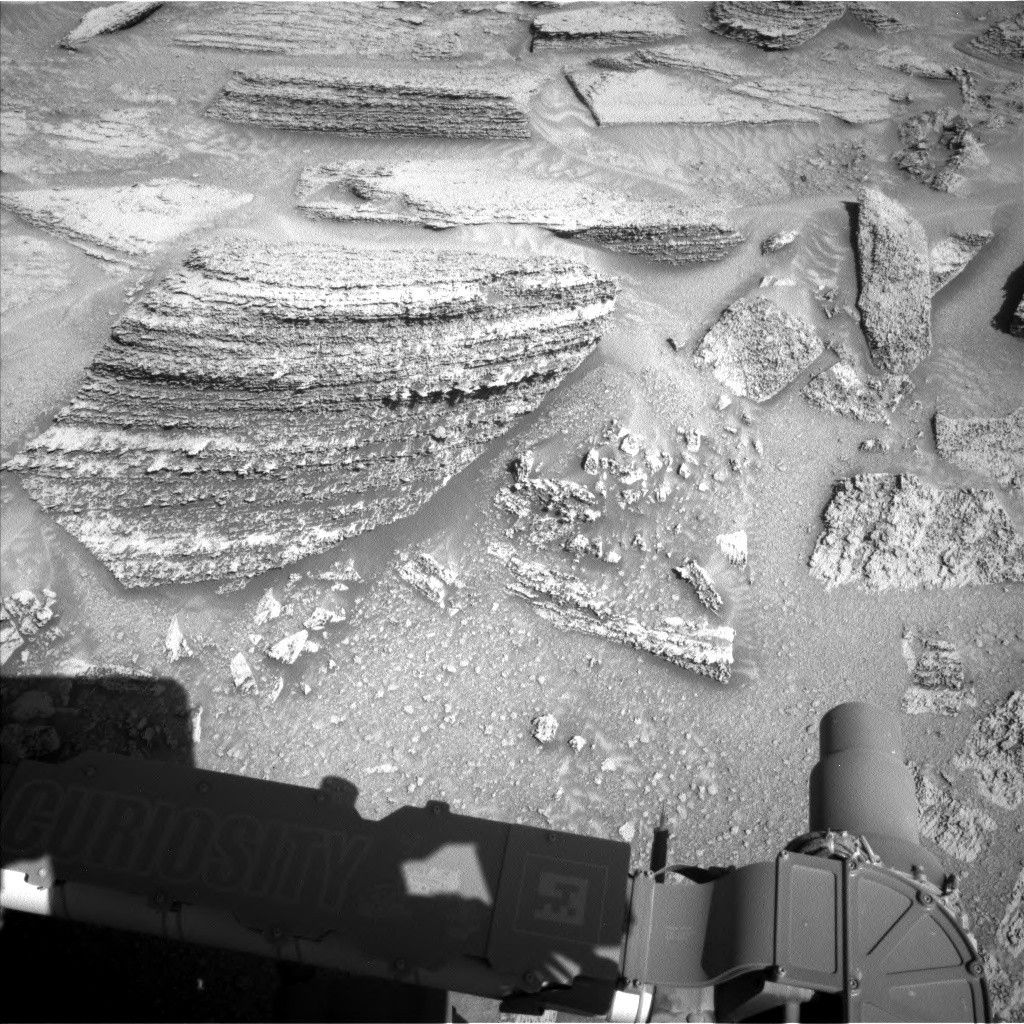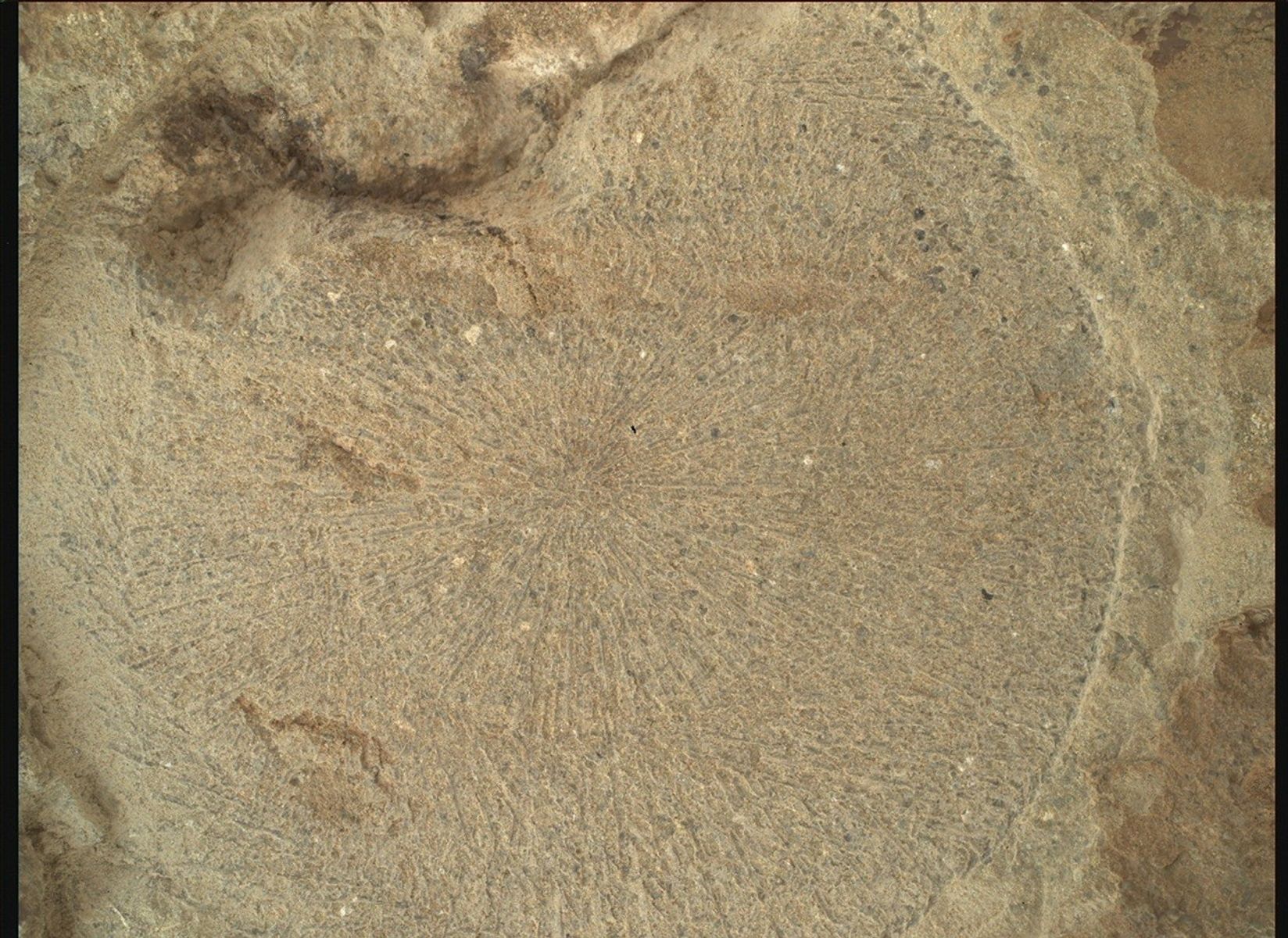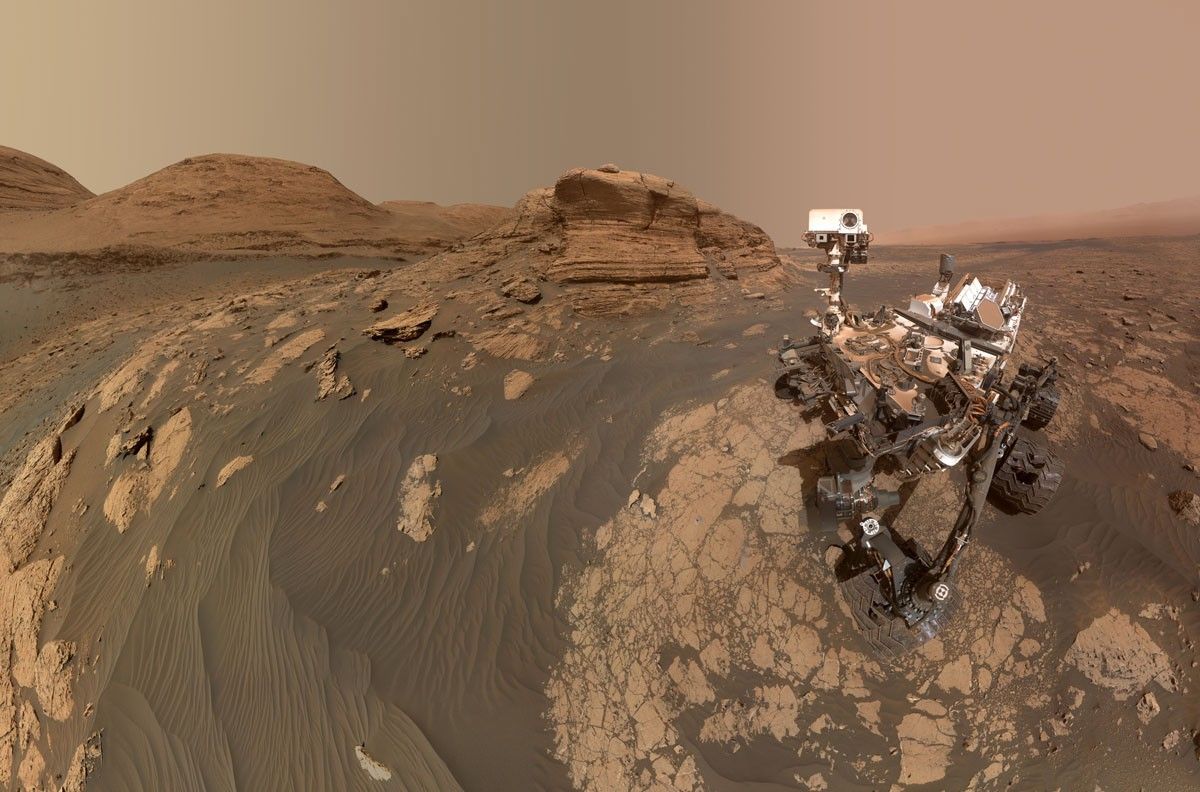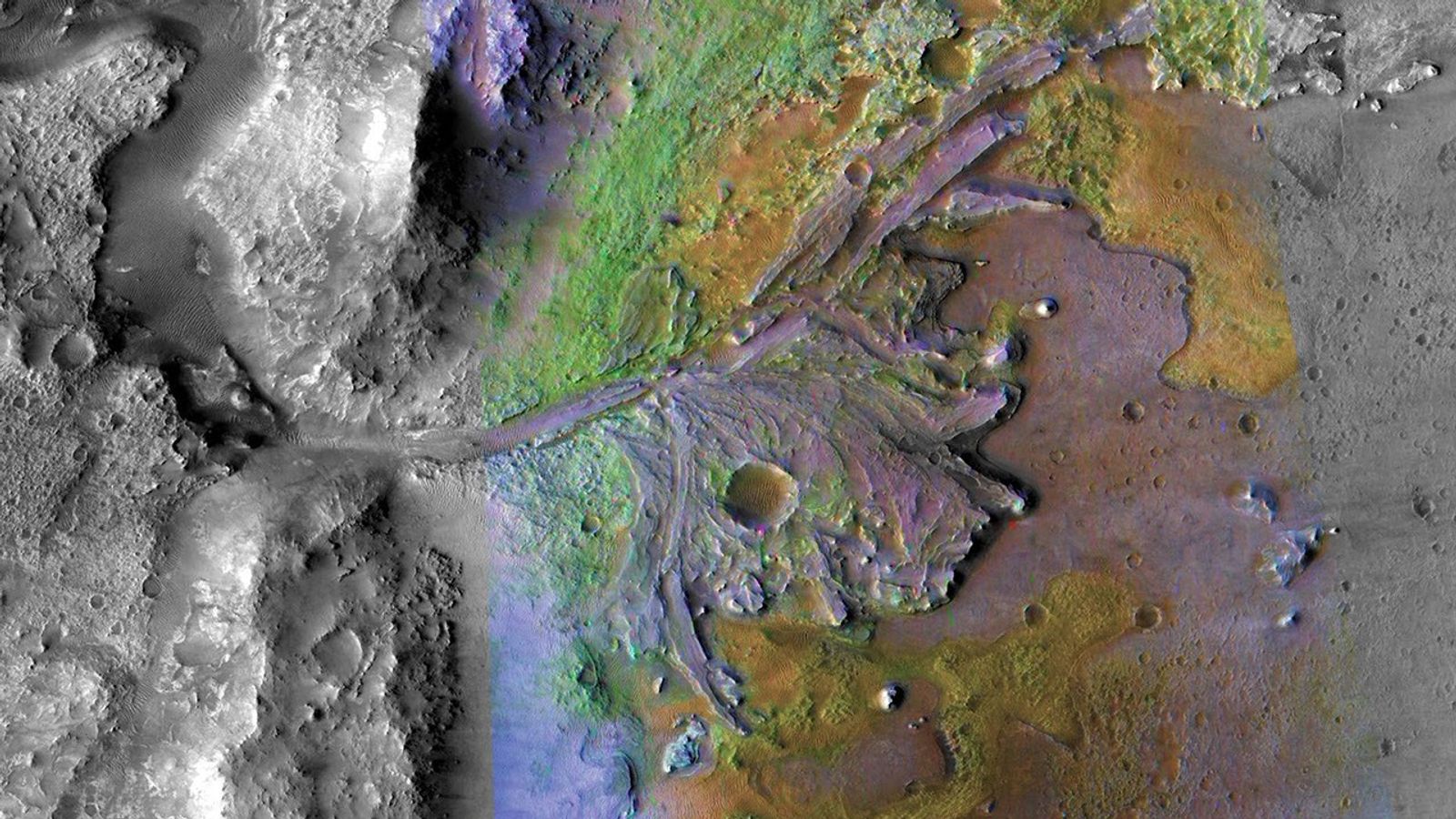Today’s title image shows how diverse the area is that Curiosity is currently travelling through, with a part of a wheel for scale.
Today’s title image shows how diverse the area is that Curiosity is currently travelling through, with a part of a wheel for scale. A close look such as this one reveals all the different textures of rock surfaces, sets of ripples, some big rocks and small pieces of rock accumulated in patches.
Today’s discussions started with some strategizing as to if to make a short excursion, nicknamed the "toe dip," in tosols’s plan or in the weekend plan. This "toe dip" is a very short deviation from our current drive route to investigate a nearby unit, in fact the contact between the unit Curiosity is standing on top of right now and a neighboring unit. These contacts between two units are always of high interest to any geologist. At contacts, we can learn so much about the succession of processes that shaped the geologic environment at the time the sediments were laid down, and well before they became rocks. Or, in fact, well before at least the upper one of them became a rock, because at a contact, a geologist can find out, if the upper unit was deposited before or after the lower unit became a hard rock. And of course, we can see, if the laying-down of the upper unit had any influence on the lower unit, or if the upper unit includes pieces of the lower unit, or if the upper unit sealed off some water flow from below and caused mineral precipitation – just to name a few of the things geologist look out for at a contact between two units.
But back to today’s plan: Yes, we decided to drive to the area for the toe dip tosol. APXS and MAHLI are investigating a target “Champagnac,” which is a large piece of rock in the multitude of options in today’s workspace, which had made itself interesting by its darker color, which could indicate a change in chemistry from the usual-colored rocks we have been investigating lately. Mastcam and the Navcams are again getting very busy this sol, with the usual workspace survey and post drive imaging to prepare the next sol. On the science activities, Mastcam will investigate the area around a target “Marnac” by executing an investigation in multispectral mode with added stereo images, as well as perform a mosaic at the area the rover will approach for the ‘toe dip’ to the contact with the nearby unit with a set of seven images.
Of course, Curiosity is doing her regular atmospheric monitoring. For this, she will image across the floor of Gale crater to see how much dust there is in the air between the rover and the distant crater rim, and she'll image toward the sun to measure the dust load in the atmospheric column. In addition, she will do image sequences to survey for clouds, dust devils, and dust lofting over the "Sands of Forvie." Other regulars include MARDI, which takes its usual image after the drive, and DAN, which surveys for water in passive mode. Another busy sol on Mars – and off she goes to dip a toe onto the contact nearby.
Written by Susanne Schwenzer, Planetary Geologist at The Open University

